In the first half of the 19th century, the eucharis flower was brought to Europe from the Amazon forests. Thanks to its exquisite beauty, it quickly spread among garden plants.
Today it grows outdoors in the flower beds of flower lovers in the Southern European part of the continent.
Breeding Eucharis and caring for it at home requires compliance with certain maintenance conditions.
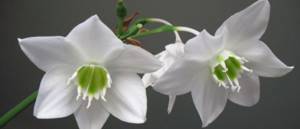
Description
In the literature, among experts, its other name is found - Amazonian lily.

Common varieties:
- Amazonian;
- Large-flowered (grandiflora);
- Sandera;
- Snow White;
- Masters;
- Toothless (Callifruria).
In appearance it looks like a daffodil. It is distinguished by a green crown in the center of the head, which is clearly visible in photos and videos posted on Internet sites.
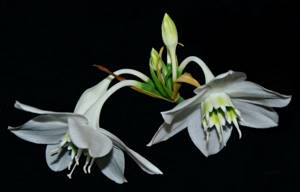
Large, clear white, slightly inclined downwards, on slender leafless stems.
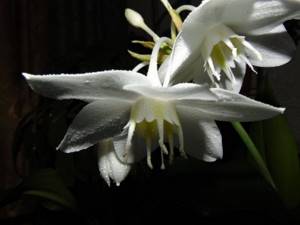
Pests and diseases
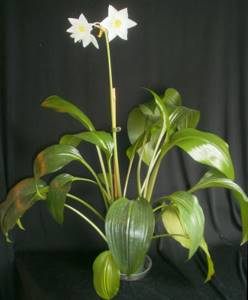
The lily is resistant to pests and rarely suffers from insect attacks. Plants that receive improper care are at risk - their immunity decreases due to disrupted agricultural practices.
In this case, thrips, scale insects or spider mites settle on the flower, slowly devouring the juicy greens.
In most cases, you can notice the appearance of pests with the naked eye - insects not only spoil the appearance of eucharis, but also leave traces of their vital activity.
For effective control, it is better to use insecticides (Fitoverm, Actellik, etc.), spraying the plant 3-4 times every 5 days.
Gray rot is a common disease of all bulbs, which occurs in “favorable” conditions, that is, at low temperatures, high humidity and abundant watering.
The Amazon lily instantly slows down in growth, the leaves wither and turn yellow, and a characteristic coating appears on parts of the plant. The disease spreads quite quickly, so treatment should be started immediately after the first signs of rot are identified.
Repeated treatments with Bordeaux mixture or copper-based preparations are recommended. In case of severe damage, it is advisable to cut out the diseased areas - this way the eucharis will recover faster.
The plant does not require intensive care and feels great on the windowsill. The culture is ideal for indoor growing, delighting with snow-white flowers several times a year.
Illumination
This indoor flower grows most favorably on the window sills of the east and west sides of the home. Abundance of lighting ensures rich blooming.
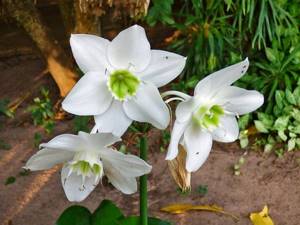
When placed on a balcony, it is important to protect it from drafts and cold wind. In hot weather, protect from direct sunlight and darken.

Thermal mode
Favorable temperature for development and growth ranges from 25-30 degrees, further growth is not lower than 18 degrees.
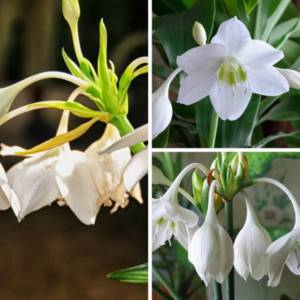
The lily can withstand a drop of up to 15 degrees, but will bear little fruit in the future; at 11 degrees and below it dies.

Watering
It grows in moderate, moist soil. Excess moisture will destroy the rhizome. During flowering, watering is carried out after the soil has dried to 1/3 of the total volume.

Settled or boiled water is used for irrigation. The leafy part is regularly sprayed, and when flowering is wiped with a wet sponge.
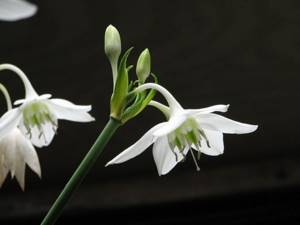
Winter care requires careful attention to watering. After growth comes a period of rest. In a state of sleep, the soil is moistened after drying 2/3 of the volume. It is important for beginning gardeners to remember this. Failure to comply with this requirement will result in loss of flowering.
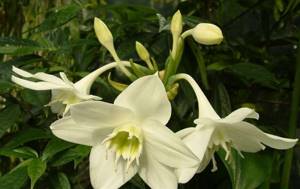
Care conditions for growing eucharis at home
Location and lighting
In its natural environment, the Amazon lily likes to hide under the canopy of trees. Is this flower so difficult to care for?
A eucharis plant in unusual home conditions will also delight you with flowering. It all comes down to providing him with living conditions. A good place for its growth and flowering is an east or west window. However, we must remember that eucharis forms a large bush and needs free space. The best option for this flower would be diffused sunlight, since eucharis does not tolerate direct sunlight, and as a result of their exposure, burns on the leaves can occur.
In summer, a pot with a plant can be placed on a glassed-in loggia or veranda in a private house, but do not forget to shade it from the midday sun. When the cool August nights arrive, you need to bring eucharis into the room in advance.
Features of temperature conditions
- Eucharis is a heat-loving plant; as a rule, the minimum temperature for its normal functioning should be at least 15 degrees.
- During active growth, the temperature should not drop below 18 degrees.
- Sudden changes in temperature can cause the plant to drop its flowers.
- A decrease in temperature to 10 degrees causes negative consequences for the plant, expressed in leaf fall and hypothermia of the bulb.
- Lower temperatures cause the death of the plant.
Irrigation regime
The Amazon lily likes to be watered abundantly, but not often, once every 3-4 days. At the end of winter, to stimulate flowering, watering is reduced (to once a week) for 6 weeks. During active growth, water the flower 2 or 3 times a week, avoiding overwatering.
Watering is done along the edge of the pot to avoid water getting on the bulb. Excessive watering may cause root rot. The substrate in the pot should be slightly moist; the earthen ball should not dry out for a long time.
Eucharis responds very well to regular spraying of the leaves, but you should alternate between watering that day or spraying, everything should be in moderation. During flowering, spraying is stopped, since when water gets on the flowers, their decorative effect is lost.
The Amazon lily is a fairly undemanding plant to care for. The only thing you need to remember is that sudden changes in temperature, as well as drafts, are the main enemies of this plant.
Fertilizers and fertilizers
Eucharis needs regular feeding, which will ensure its full growth and flowering. It responds well to both mineral and organic fertilizers (“Rainbow”).
With active growth of leaf blades, the plant needs regular fertilizing with fertilizers with a large amount of nitrogen; fertilizing is done from February to October every 10 days. Before flowering, eucharis is fed with flowering fertilizers with large amounts of phosphorus and potassium (potassium monophosphate).
During flowering, fertilizing is reduced by half so as not to stimulate rapid flowering. When short daylight hours occur, to maintain the life of the plants, use universal fertilizer (FlorHumate floral universal) once every 3 weeks.
When dry leaf tips appear, it is recommended to use fertilizers with a large amount of iron (iron chelate), this will promote the growth of new leaves and eliminate such unpleasant moments in the future.
Rest period
After flowering, the plant needs rest; the duration of the dormant period can be 36-50 days. During this period, reduce watering and exclude any additional feeding. The whole secret of good rest is to give the plant the opportunity to fully rest before planting new flower stalks.
The main task is to prevent the loss of old leaves, as well as the growth of new ones throughout the entire dormant period, then based on these signs it can be judged that the plant has sufficiently rested.
Proper watering at different stages of growth and dormancy, as well as timely application of fertilizers, will help achieve flowering three times a year (in winter only with lighting); for beginning gardeners, flowering of eucharis twice a year is considered an excellent result.

Soil selection, transplantation, propagation
The Amazon lily does not take well to transplantation, so the plant is replanted only when the soil in the pot is completely permeated with roots, once every 3 years.
For this, the “transfer” method , when they select a pot 5-7 cm wider in diameter (for an adult bush), transfer the plant with a lump of the same soil, and fill the voids with fresh soil. A layer of nutritious soil is also poured on top.
The substrate is selected to be nutritious and have good ability to absorb moisture. A universal soil containing coconut fiber, peat, and organic additives is best suited. And also the obligatory presence of perlite or vermiculite, thanks to which the earthen clod does not get knocked down.
An adult plant reacts very negatively to replanting, sometimes dropping all its leaves because of this. Therefore, we replant the adult flower with an earthen lump into a larger container.
The replanting process is best done in early spring.
- The pot must have holes to drain excess water.
- Place drainage at the bottom with a layer of 3 cm.
- Pour a layer of nutritious soil.
- Transfer the earthen ball with the bush.
- Fill the voids with fresh soil and water generously along the edge of the pot.
- If the soil sags after watering, the substrate needs to be replenished.
The plant must be replanted with gloves, as it can have a negative effect on the skin of the hands. Eucharis amazonica contains lycorine , which repels pests. This alkaloid is poisonous for humans and animals: if consumed internally, it will cause vomiting, increased salivation, trembling, convulsions, abdominal cramps, and a decrease in blood pressure.
Eucharis should be transplanted carefully, without disturbing the leaves and roots if possible. Do not deepen the bulb too much, so as not to cover the growing point. After replanting, to restore the plant, you can spray the leaves with Epin, this will help smooth out the stressful situation for the plant.
Eucharis, like all bulbous plants, is most easily propagated by daughter bulbs.
To do this, the children are separated from an adult plant and planted in separate pots.
It is important to remember that eucharis is a collective plant; you should not plant it one bulb at a time. Otherwise, it may slow down flowering for three years until new daughter bulbs grow.
The bulbs are planted three in a pot and, when planting, they are deepened so that the tops of the bulbs peek out from the soil. Then water along the edge of the pot and place the pots with the babies in a dark place for 2-3 weeks, until they take root and begin to grow. After this, they are transferred to a permanent place and begin to be cared for as usual. Such plants bloom within a year.
Amazon lily pests
Like all indoor plants, the eucharis flower is susceptible to pests. The main reason for their appearance is dry air and low humidity.
The main pests of the flower are: aphids, scale insects, thrips, spider mites. If pests are detected, you must first wash the leaves with soap and water. To globally combat these unpleasant phenomena, it is necessary to treat with insecticides, for example: “Fitoverm”, “Aktellik” (use according to the instructions on the package) by uniformly spraying the foliage; after a week, the treatment must be repeated.
Common problems when growing eucharis
When growing this flower at home, problems can sometimes arise; let's look at the main ones.
The leaves began to turn yellow
If the leaves turn yellow, it is necessary to treat the bulb with foundationazole. With normal plant growth, the yellowness of old or lower leaves is considered normal, since the bush has the ability to renew itself and regulate which leaves it gets rid of.
But if this process occurs rapidly, then urgent measures need to be taken. The most likely cause may be that the plant is overwatered.
It is necessary to remove it from the pot and carefully examine the bulbs; if there are defects on them, then the process of rotting has begun. You need to reconsider everything and leave the strongest ones, after which you can cut off the damaged areas with a knife and sprinkle the sections with foundation, this will help stop the process. Then plant the treated bulbs in fresh soil and let them recover. If everything was done correctly, the bush will recover over time, but you should be patient.
The leaves have lost their elasticity
Most likely, the reason for this is lack of moisture. Watering needs to be adjusted.
The leaves are curling up
The reason for this may be that the air is too dry, so folding the leaves protects them from excessive evaporation of moisture. Watering should be adjusted and sprayed regularly.
Eucharis does not bloom for a long time
This is the most common problem for new gardeners. First of all, there is no need to rush to replant if daughter bulbs are growing. This is the first sign that flowering is just around the corner. The reason for this is inadequate rest after flowering. During this time, watering and fertilizing were not reduced, as a result, this leads to the fact that flowering is postponed for an indefinite time. It is necessary to give the plant proper rest.
Also, the Amazon lily flower will not bloom if the difference between day and night room temperatures exceeds 7 degrees.
Another reason for failure to bloom is considered to be lack of watering, for example, watering once a week.
This is rarely affected by poor soil and lack of proper fertilizing. Fungal infection of the bulbs can also affect it.
By observing the above conditions for caring for eucharis, you can get a long flowering plant at home without hassle.
An experienced gardener and a beginner can do this; you just need to take into account the recommendations outlined in the sadzavodi.ru article.

Soil preparation
When flowering, fertilizing is carried out with solutions of mineral substances. The concentration is created slightly lower than that proposed by the manufacturer. The use of fertilizers of organic origin is allowed. In winter, fertilizers are not applied to the soil.
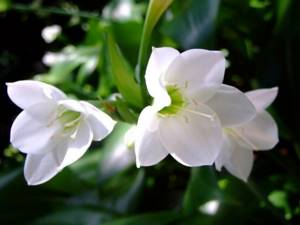
Lily growth depends on the choice of soil. For good development, an earthen layer is created that has water-air permeability.

When purchasing in specialized stores, soil for the amaryllis family is purchased. Self-production uses elements of earthen and leaf compost, peat, river sand, proportion: 2-1-1.
Seating
Planting and transplanting takes place in March. A pot is selected, the optimal size is 20 (25) cm in diameter. It is equipped with a hole in the bottom, a layer of pebbles, small stones, and expanded clay.
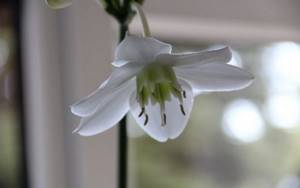
5 (6) pieces are planted in one dish. “kids” to a depth of 4 - 5 cm. After landing, a ten-day rest without spilling is provided.
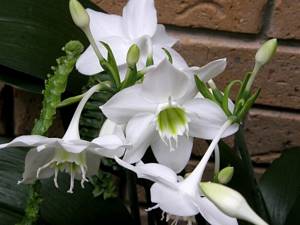
Lily does not tolerate replanting. If it blooms generously, then this procedure can be carried out once every three to four years. Transplantation is necessary when many “babies” are formed on the root.
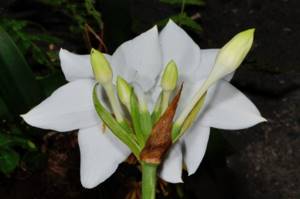
Home care
The Amazon lily is a non-capricious plant. Coping with growing a luxurious flower is much easier than many people think when looking at a beautiful tropical specimen.
Important points:
- moderate hydration;
- average illumination of the home;
- temperature in the apartment, taking into account the season and period of life of the flower;
- compliance with the rules of care during the rest period;
- transplantation is quite rare;
- a simple method of propagation - by offspring, simultaneously with moving to a new flowerpot;
- nutritious, fairly light soil.
Features of seasonal care with changes in temperature, watering, humidity, and light are described in the following sections.
Location and choice of flowerpot
Decorative foliage plants are placed in any part of the apartment, with the exception of dark corners and dimly lit areas. Many varieties of Amazon lily grow well even next to north-facing windows. If shading is possible on hot days, it is allowed to place a flowerpot in the southern and eastern rooms.
Where to place the plant? A young eucharis feels comfortable on a windowsill, but as it grows, you will have to move the flower to a stand near the window. In an adult plant, the leaves form a lush rosette, fall beautifully to the sides, buds appear on long peduncles, and enough space is required for a spectacular specimen.
Amazon lily flowers exude a bright, sweet aroma. For this reason, you should not place a flowerpot (especially several pots) in a bedroom or small room.
What kind of pot is needed for an Amazon lily? Not very large, otherwise the roots will grow and take more nutrients than they need to actively increase the underground part. The result does not please the gardener: the buds and leaves become smaller, the flowering period is shorter, and luxurious lilies do not always appear on flower stalks.
Priming
Drainage is a mandatory element to maintain proper outflow of liquid from the flowerpot. Pieces of brick, coarse gravel, pebbles or expanded clay are placed at the bottom of the flower pot. The flowerpot must have several drainage holes. Eucharis loves a moderately moist substrate, but, like other indoor flowers: poinsettia, Decembrist, adenium, spathiphyllum, it does not tolerate waterlogged soil.
When preparing your own substrate for bulbous plants, it is useful to heat the soil mixture in the oven at a temperature of 100 to 120 degrees. A simple processing method inhibits the growth of pathogenic fungi that are often found in wet components.
Planting and transplanting
For a tropical plant, buy ready-made soil at a flower shop or prepare a soil mixture with your own hands. In a large container, combine 1 part of coarse sand and peat, add compost soil: 2 times more. Some gardeners advise replacing 1/2 of the sand with perlite.
The bulbs are buried halfway, later the base is often hidden under a layer of soil, but there is no need to worry: the plant will grow and develop as usual. The main thing: to properly care for the Amazon lily, not to disturb the dormant period.
For a grown flower, the pot should not be much larger than the previous one: a large container is a common reason for the lack of buds. Drainage holes are needed to reduce the risk of bulbs and roots rotting in very wet soil.
Transplantation is carried out no more often than every three years. During this period, shoots are formed on the plant, thanks to which abundant flowering occurs. If the bulbs are often located in marshy soil, then the risk of disease and even death of eucharis increases.
The right time to plant an Amazon lily is March. During this period, the plant has not yet emerged from its dormant state, but preparations for active growing season are already beginning. Before spring growth begins, the Amazon lily will get stronger, recover from stress after transplantation, and the flowering process will not be disrupted.
Step-by-step video - instructions for transplanting eucharis:
Temperature and humidity
Important details:
- Amazon lily grows well at room temperature: from +21 C to + 23°C. If the summer is not very hot, then it is useful to take the flowerpot with a flower out into the fresh air: to the terrace, to the garden, or place it on a well-ventilated balcony.
- If there is a large temperature difference (7–8 degrees) between night and day, there is no need to hope for the appearance of large flowers: the buds will be small.
- In winter, you should not significantly reduce the air temperature: many types of Amazon lilies throw out buds even in the cold season. Sharp fluctuations in indicators should not be allowed.
- During the rest period, the optimal temperature is from +17 to + 18°C. At t +15 degrees, the ability to grow leaves is preserved, but for one or two seasons you may not see buds.
- If the thermometer drops below + 11°C, poor conditions persist for several days, then the leaves wither, the roots and bulbs rot, and the plant most often dies.
- For active growing season from March - April, the room temperature is increased to + 22°C, otherwise leaf growth will be slow.
Watering and spraying
An important nuance that experienced flower growers pay attention to. Watering is needed regularly, but quite infrequently. Before adding a new portion of liquid, the soil must be almost completely dry. Watering too frequently can harm the Amazon lily, especially during the rest period after flowering. During the dormant period, humidification is carried out by adding water not to the pot, but to the tray.
A simple method will help you understand how dry the soil in the flowerpot is. The method is reminiscent of determining the readiness of pies. You will need a thin wooden stick and care when taking measurements. Periodically immerse the stick deep into the flowerpot, closer to the walls, wait for 5 to 10 minutes, take out the splinter, check at what depth the soil is still wet and where the wooden gauge is dry.
Lighting
Under natural conditions, the Amazon lily grows in the lower tier of a tropical rainforest and receives diffused light. For this reason, you should not place a pot with eucharis on a windowsill on the south side, in direct sunlight. The best option is to place the flower pot on a decorative stand and move it away from the window to the wall area to achieve diffused lighting. It is useful to cover the blinds, shade the tropical specimen a little, but avoid deep shadow.
Feeding and fertilizers
There is no special hassle with adding nutrient mixtures: regular soil fertilization is carried out only during the growing season and flowering. A good option is to water the flower with a solution based on succinic acid, but the natural component should not replace other types of fertilizers.
Important details:
- an excess of mixtures with nitrogen enhances leaf growth, the buds become smaller or appear rarely;
- the best option is to use phosphorus-based compositions for active flowering;
- Fertilizers are applied twice a month.
Flowering and dormant period
It is imperative to give the plant rest so that the eucharis gains strength to actively release buds. Unlike other plants from the Amaryllis family, the Amazon lily does not lose its decorative effect; the leaves do not fall off during the dormant period. Flowering occurs once or twice a year; there may also be two periods of rest.
What to do after flowering? Useful tips:
- cut flower stalks;
- choose a room with a temperature of +17–18 C;
- sharply limit watering, add water to the pan, and not on top of the soil.
Rest for eucharis lasts about a month. When young shoots appear, the flower is transferred again, but to a place where it is warmer: about + 22°C. This way you can activate the growing season. Next, standard care for the Amazon lily is continued.
Reproduction methods
The method is simple - planting offspring that have grown over 3 years. To plant young eucharis, you need small pots and the same soil as for an adult Amazon lily. After planting, you need moderate watering of the substrate and moving the flowerpots to a shaded area.
Young eucharis will not bloom soon, but there is no need to worry.
You need to be patient, wait until the roots almost completely fill the pot, intertwine with the earthen lump, and new “babies” grow. Warning! The alkaloid lycorine in the stems, leaves, and bulbs negatively affects the bronchi, allergies and vomiting may occur. When transplanting and propagating Amazon lilies, you must adhere to safety measures: carry out work with thin elastic gloves and wear a disposable medical mask. Transplantation and separation of bulbs is carried out on the street or balcony: this way it is easier to avoid the negative effects of lycorin on the human body. If there is a cat in the house, then you should choose a different type of indoor plants: the furry pet often tastes the leaves, which can lead to intoxication of the animal.
Trimming
Kinds:
- preventative or cleansing. Sick and weak shoots are removed from the plant to avoid transferring fungi and other problems to neighboring areas. Thinning prevents excessive crowding of leaves, which allows for proper distribution of nutrients between all elements and improves the condition of the flower;
- formative. When the Amazon lily actively grows and the stems and leaves develop unevenly, parts that reduce the decorative effect and violate the aesthetics and “correct” shape of the bush are removed.
Breeding
There are two ways:
- Seeds;
- Bulbs (babies).
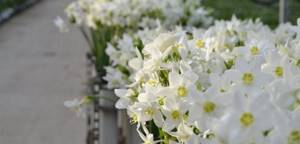
Popular bulbous propagation method. Over three to four years, the main (mother) bulb becomes overgrown with small bulbs.

From the main bulb, 4-5 bulbs are separated, fastened together. Together, the “babies” settle in better, grow faster, and grow faster. With this option, young inflorescences can be seen in the year of planting.
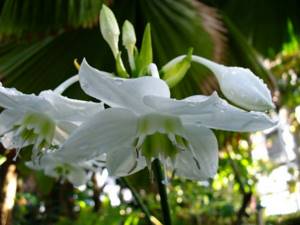
Growing from seeds is a troublesome operation and takes a lot of time and effort. The result of this work is observed no earlier than five years later.
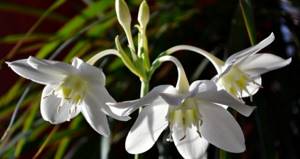
Knowledge of breeding requirements will help you figure out why eucharis does not bloom.
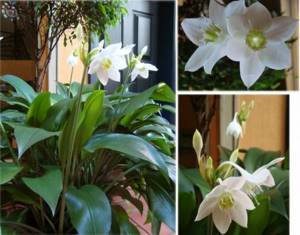
Tips and wishes
To ensure development, the plant must be kept in a tight pot. In a spacious container, fruiting may stop.
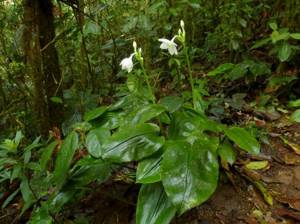
If the leaves turn yellow, brown spots of a brownish-red color form on them, this is evidence of hypothermia or improper irrigation.
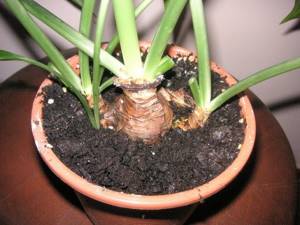
To eliminate it, the root base is inspected, cleaned of rot, and replanted. If the base is not affected, then only yellowed foliage is removed.
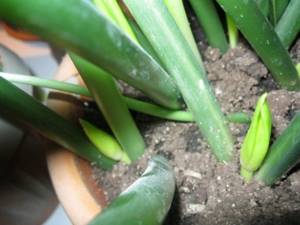
The wilting or yellowing of one or two leaves is a natural process. They are removed as necessary.
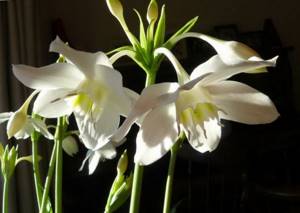
Oversaturation of the soil with nitrogen leads to a decrease in the number of flowering heads. Errors in care can lead to developmental delays.

Amazon lily care instructions
Eucharis is an evergreen tropical plant that requires special conditions when kept at home. In order for the flower to bloom, you need to follow simple rules of care.
For arrows to appear
- The size of the pot in which it is placed is of great importance for the comfortable well-being of the Amazon lily. The container should be small , since in a spacious container all the vital forces of the plant will be directed to the development of the bulb and children to fill the space with them; There will be no energy left to ensure lush flowering. In a cramped pot, all resources will be used for flowering.
- It is better to determine the place of residence of eucharis near windows on the western or eastern side. A resident of tropical forests needs a lot of diffused light and is afraid of direct sunlight.
- Watering should be moderate . Do not allow the soil to become waterlogged or overdry. Be sure to place drainage at the bottom of the pot. Water should be settled before watering; melt or rain water is ideal.
IMPORTANT! During the formation of the peduncle, you need to stop spraying the plant, since if moisture gets in, brown spots will appear on the buds, which will reduce the aesthetic value of the flower.
During flowering
- During flowering, you cannot spray the flower . Moisturizing should be done by wiping the leaves with a damp sponge so that moisture does not fall on the peduncle. Spraying is necessary only during the growing season of the plant.
- During the period of active flowering, the air temperature should not be lower than 18 degrees . A sharp change in temperature will have a negative impact on the formation of inflorescences.
- After the arrow reaches 10 cm, more abundant watering is required . If you start watering earlier, the flowering process will slow down, as energy will be spent on the formation of leaves.
After graduation
- If no decision was made to collect the seeds, then after wilting the flowers should be removed (flowering lasts 15–20 days). Otherwise, the flower will continue to spend its supply of resources on the formation of seed pods.
- After the buds bloom, you can cut the peduncle and place it in a vase with water . This will preserve the strength of the bulb and provoke the release of the next arrow. The lifespan of the peduncle on the mother bulb and in a vase with water is the same. However, many gardeners prefer to enjoy the natural appearance of the plant. Read about what to do with the peduncle after flowering here.
- After flowering, eucharis must be provided with a period of rest to allow it to gain strength to continue growth and development. After cutting off the arrows, you should reduce watering, allowing the soil to dry out by two-thirds of the pot.
Possible diseases
Most often, diseases and pests arise due to errors in watering, temperature conditions, and high humidity.

Characteristic diseases:
- Gray rot;
- Stagonosporosis.
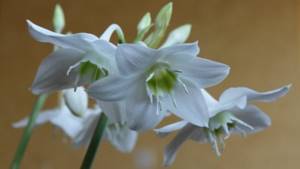
The first occurs when growing in a humid room with low temperature. The appearance is indicated by fading leaves, which are painted dark along the edges. In continuation, the stem and foliage become moldy and fall off. Treatment is carried out with diluted copper sulfate and removal of the affected foliage.
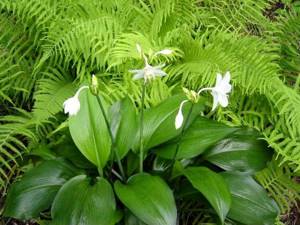
The second is a consequence of changes in thermal conditions or waterlogging of the earthen coma. The plant becomes covered with brown-red spots.
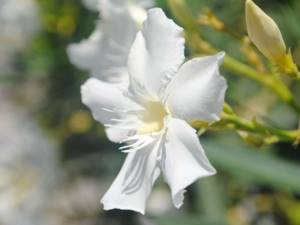
The leafy part withers, the base rots, which leads to the loss of the flower. During treatment, the rhizome is cleaned of damaged bulbs, the root base is etched with a special solution, and replanting is carried out.

A lily sprouting on a balcony can be attacked by various insects from the region where you live.
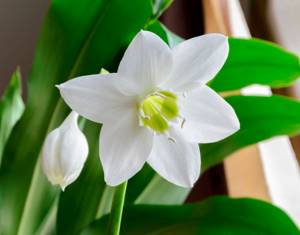
Most often it is attacked by fungus gnats, spider mites, and amaryllis scale insects. Their appearance is characterized by wilting, yellowing, and drying of the foliage.
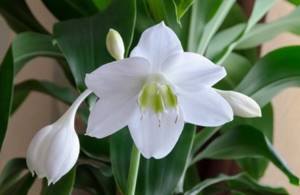
To combat parasites, special chemical compounds are used, the head bulb is watered with protective agents, and the leaves are washed with appropriate substances.
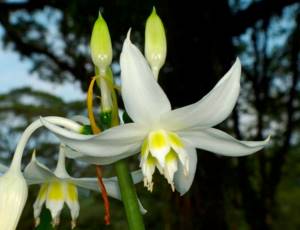
Eucharis is a beautiful, appreciative flower. It is not difficult to care for Eucharis at home, its wonderful leaves and lovely heads make it a decoration for your home.

Types and varieties of indoor eucharis: description of popular ones
Lily in a pot - care at home
Among the most popular varieties in Russia:
Eucharis grandiflora
The foliage of this variety is dark green, elongated oval with sharp tips. The corollas reach 12 cm in diameter on a peduncle up to 80 cm long. Each umbrella has 3-8 buds with snow-white petals. The aroma is very persistent. Flowering occurs twice a year: in December and also in May or August.
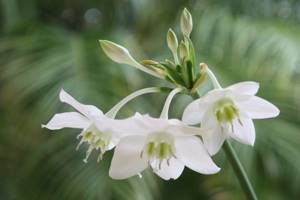
Eucharis Grandiflora
Eucharis Sandera
Produces a long peduncle with an umbrella of 2-3 buds. Each corolla is connected to a peduncle by a long (up to 5 cm) tube curved downwards. This gives the inflorescence a drooping appearance. The stamens are united with each other by a narrow yellow border, which looks like a small crown.
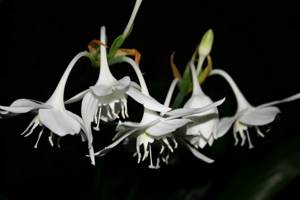
Eucharis Sandera
The leaves are up to 30 cm long and up to 17 cm wide, dark green in color with a smooth shiny surface and pronounced veins. At the base the leaf is heart-shaped, and the stalk reaches 10-15 cm in height.
Eucharis mastersa
An ovoid bulb up to 5 cm in diameter is typical for it. The foliage is elongated and pointed at the ends. Each leaf is up to 25 cm long and up to 15 cm wide. There are only 1-2 flowers in the inflorescence. Usually blooms in March.

Eucharis mastersii
Eucharis dentata
Its ovoid bulbs are typically characterized by four leaves, 25 cm long and up to 10 cm wide, with elongated, grooved petioles. The surface is glossy with noticeable longitudinal veins. The umbellate inflorescence contains 6-8 flowers with short (up to 1.5 cm long) white petals curved upward. The stamens are separated and lanceolate in shape. The corolla resembles a lily with a short (up to 3 cm) green tube connecting it to the common peduncle.
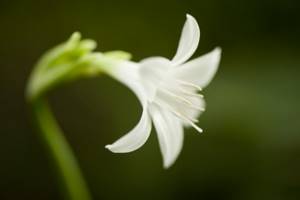
Eucharis Subedentata











